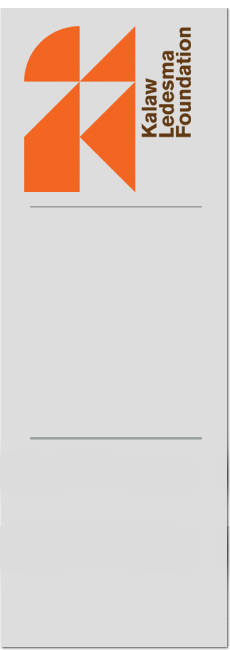"Chambers of Reflection": A Critique on Mark Justiniani’s Reverb
BY DOMINIC ZINAMPAN
On Mark Justiniani’s Reverb at the
Jorge B. Vargas Museum and Filipiniana Research Center
13 April – 6 May 2016
There are days I find myself traversing across the metro and despite its utmost familiarity, I occasionally feel uneasy. Not to be too melodramatic, but contemplating on life yields the same results for me—I get conscious of the discomfiting stasis embedded in life’s labyrinthine nature of which the only course of action is to accept the circumstances. This is primarily the result of feeling rudderless—an omnipresent sentiment explored in Mark Justiniani’s recent exhibition.
Reverb, Justiniani’s solo show, ran from April 13 to May 6 at the 1F Galleries of the UP Vargas Museum. Despite twenty years working as a social realist painter, Reverb consisted entirely of installations, revealing Justiniani’s fixation on the concept of infinity, its spatio-temporal implications, as well as on human perception.
The exhibit consisted of seven works arranged throughout the dimly lit museum space. Justiniani’s works take the form of portals encapsulated separately in wooden cases with a glass screen in front and a mirror at the back. Sandwiched between the screen and the mirror are dioramas of urban spaces such as train stations, alleyways, tunnels, and railroad tracks. Deceptively, the glass screen’s transparency obscures the fact that it actually reflects the mirror’s surface, initiating a feedback loop of images.
Justiniani’s careful manipulation of light and space exposes the limits of visual perception. Mirror images of the dioramas are interminably replicated so when viewing the work holistically, the virtual merges with the tangible to an inextricable degree. An abyss is formed once this process of fragmentation and multiplication seemingly ends.
A penchant for the crude and decaying is evident in the preferred media and technique: rusty iron rods, chipped wooden planks, and shabby masonry appear in most of the works. Metal, wood, concrete, and light bulbs are the dominant materials in Reverb and considering their prevalence in construction vis-à-vis their unrefined nature, industrial excesses and urban waste is signified, constructing the mise-en-scène of a desolate and austere dystopia.
These spliced environments also span a variegated range of themes. An example would be the alienation generated by constant work, as seen on Echopraxia—the title itself, being a conjunction of the words “echo” and “praxis”, already indicates repetitive action.
Echopraxia features two rows of men facing one another, each with a computer keyboard on their lap. The tan and ochre figurines form an assembly row of typists devoid of any emotional expression in this bleak cargo plane-resembling tunnel.
Another work featuring human figurines is titled Transit. It is set in a train station with pale, monochromatic figurines dressed in business suits seated either on the platform or in the train, seemingly confined in their own individual worlds.
Stylite is one of the two vertigo-inducing pit-like installations in Reverb. In this piece, a stack of files and folders signifies a never-ending pile of menial tasks. The title itself drags us into an analogy with the Stylites, a group of Christian ascetics that dwelled on top of pillars in isolation, thereby implying that corporate or academic work is replacing religion in demanding our absolute devotion.
Power, as a concept, is critiqued in Pillars, the other lateral work. Two towers are presented—one is made of wooden boxes, the other is a skeleton of metal rods and wire. Historically, pillars served as metaphors of power due to the magnificent heights they reach but Justiniani renders them impotent by utilizing crude materials, exposing its vulnerable state, and giving the illusion of the absence of any strong foundation by having them stand on virtually nothing.
More blatantly, power is explored in Looban, a work depicting a curved and narrow alleyway with tattered electoral posters covering one wall while a series of electric meters and cables are installed on the opposite one. The flyers and electricity are used as metaphors for power and the dual nature of the title acts as a subtle critique: “looban”, when used as a noun means “interior” or “inner recesses” (e.g. the alleyway) however, the word’s verbal form (meaning “to ransack”) cunningly implicates our nation’s campaigning politicians.
Allegoria, the largest work in Reverb, alludes to Plato’s Allegory of the Cave wherein shackled men assume that reality is limited merely to the shadows they see in the cave. Wire grids arch to form a large tunnel that curves slightly to the left. Considering both the Allegory of the Cave and Justiniani’s mirror technique, Allegoria forces us to reassess our assumptions on what constitutes reality—is there more to it than what we know and perceive?
In every work, we are confronted with a void from which dualities such as despair and hope, unease and wonder, and paralysis and propulsion emerge. Such paradoxical binaries are prevalent throughout Reverb—encapsulated yet endless, these voids can be foreboding but also alluring, simultaneously magnetic and unapproachable, beckoning us despite the danger they impose.
I believe that attempting to distill a single, unifying meaning or “essence” from a collection as multidimensional as Reverb is ultimately futile since every work poses open-ended questions which shoot in all directions and spawn more questions. It might be more fruitful to engage in a dialog with the works by immersing one’s self in it, treating each installation as separate moments of reflection, as opportunities to contemplate on existential and political matters.
The installations reveal that voids manifest as a result of infinite repetition extending far beyond the limits of our perception. The choice to trust our eyes and firmly believe in the visual presence of the abyss lies with us. Either that or we can unshackle ourselves from the Cave and leap into the void, so to speak.




